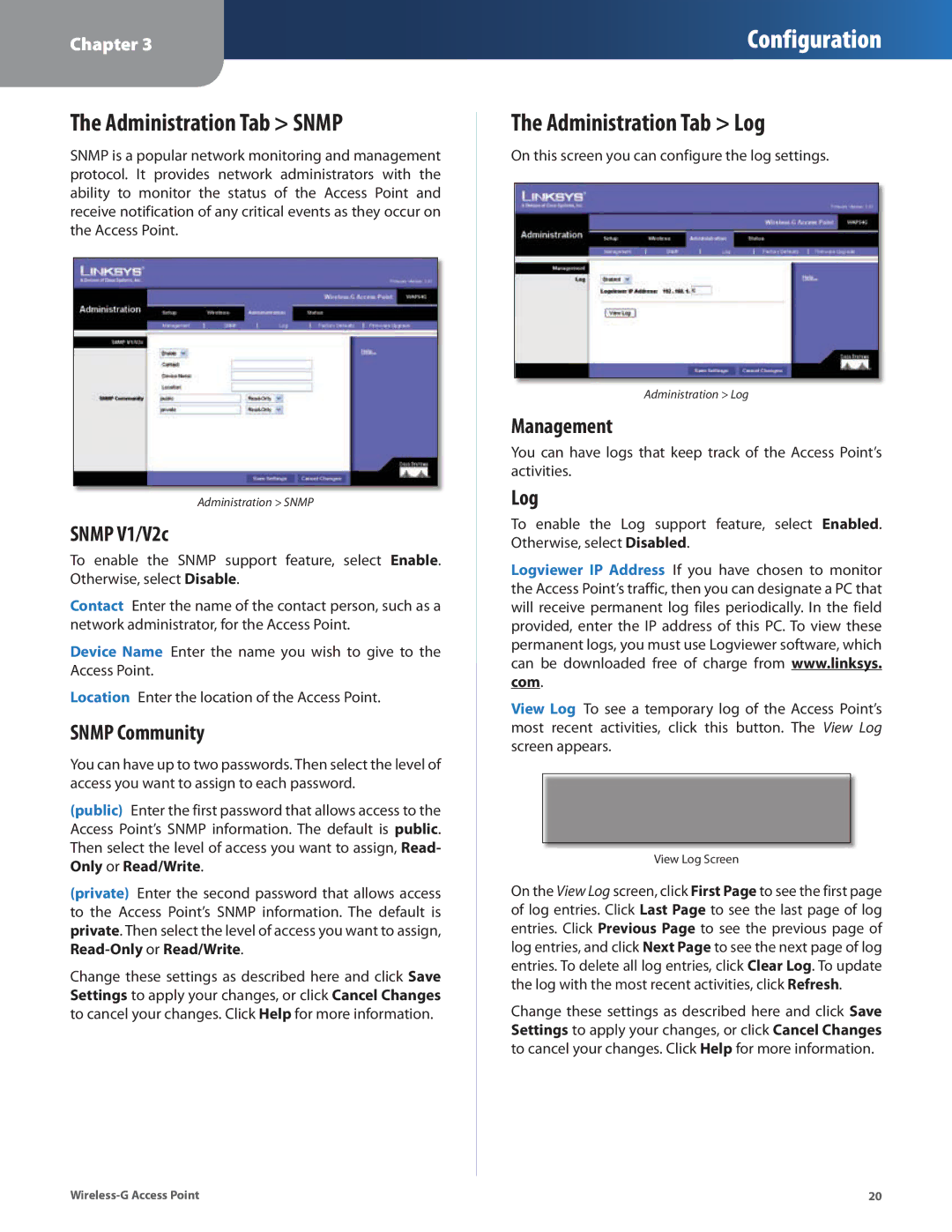
Chapter 3
Configuration
The Administration Tab > SNMP
SNMP is a popular network monitoring and management protocol. It provides network administrators with the ability to monitor the status of the Access Point and receive notification of any critical events as they occur on the Access Point.
Administration > SNMP
SNMP V1/V2c
To enable the SNMP support feature, select Enable. Otherwise, select Disable.
Contact Enter the name of the contact person, such as a network administrator, for the Access Point.
Device Name Enter the name you wish to give to the Access Point.
Location Enter the location of the Access Point.
SNMP Community
You can have up to two passwords. Then select the level of access you want to assign to each password.
(public) Enter the first password that allows access to the Access Point’s SNMP information. The default is public. Then select the level of access you want to assign, Read- Only or Read/Write.
(private) Enter the second password that allows access to the Access Point’s SNMP information. The default is private. Then select the level of access you want to assign,
Change these settings as described here and click Save Settings to apply your changes, or click Cancel Changes to cancel your changes. Click Help for more information.
The Administration Tab > Log
On this screen you can configure the log settings.
Administration > Log
Management
You can have logs that keep track of the Access Point’s activities.
Log
To enable the Log support feature, select Enabled. Otherwise, select Disabled.
Logviewer IP Address If you have chosen to monitor the Access Point’s traffic, then you can designate a PC that will receive permanent log files periodically. In the field provided, enter the IP address of this PC. To view these permanent logs, you must use Logviewer software, which can be downloaded free of charge from www.linksys. com.
View Log To see a temporary log of the Access Point’s most recent activities, click this button. The View Log screen appears.
View Log Screen
On the View Log screen, click First Page to see the first page of log entries. Click Last Page to see the last page of log entries. Click Previous Page to see the previous page of log entries, and click Next Page to see the next page of log entries. To delete all log entries, click Clear Log. To update the log with the most recent activities, click Refresh.
Change these settings as described here and click Save Settings to apply your changes, or click Cancel Changes to cancel your changes. Click Help for more information.
20 |
